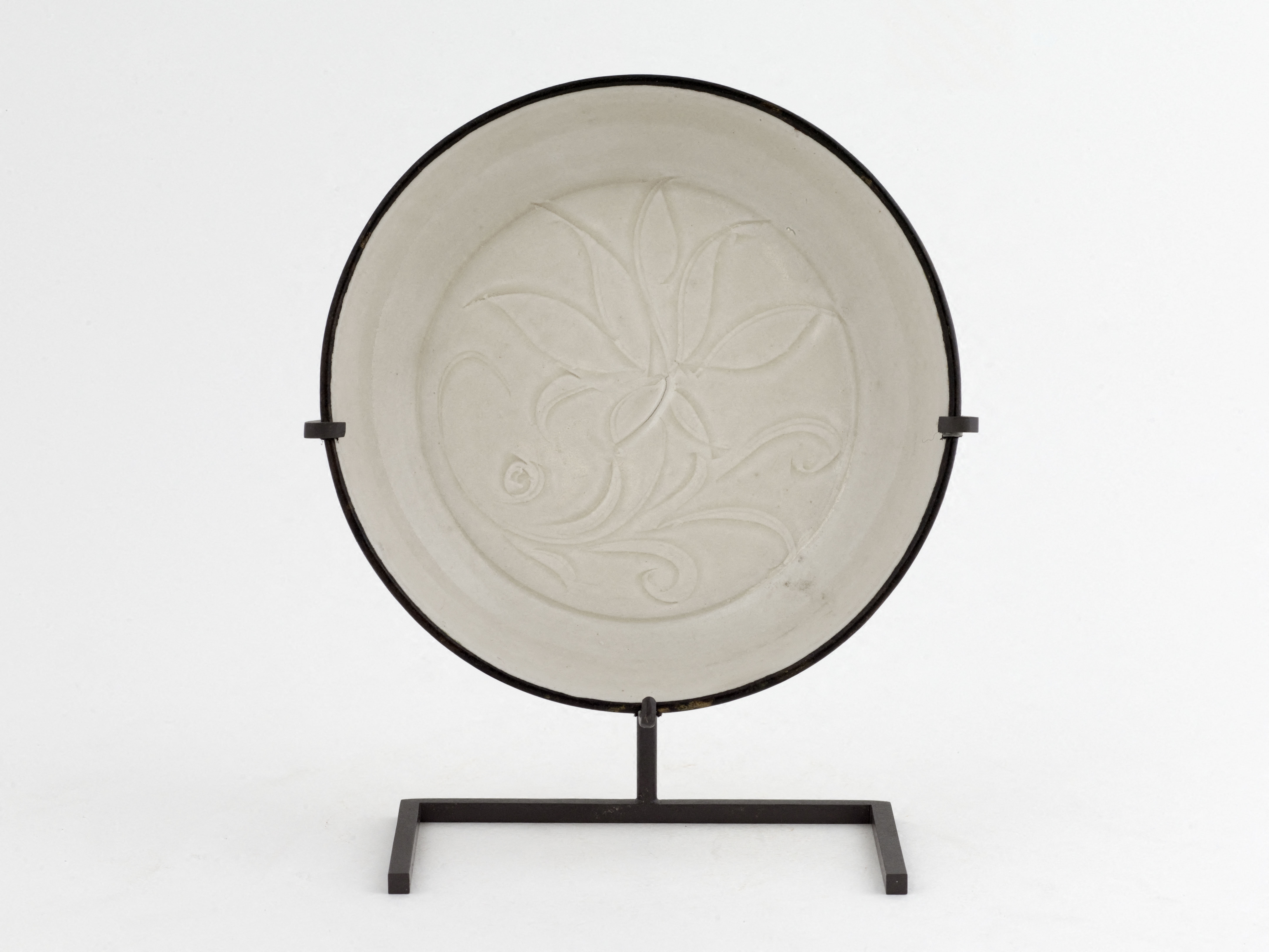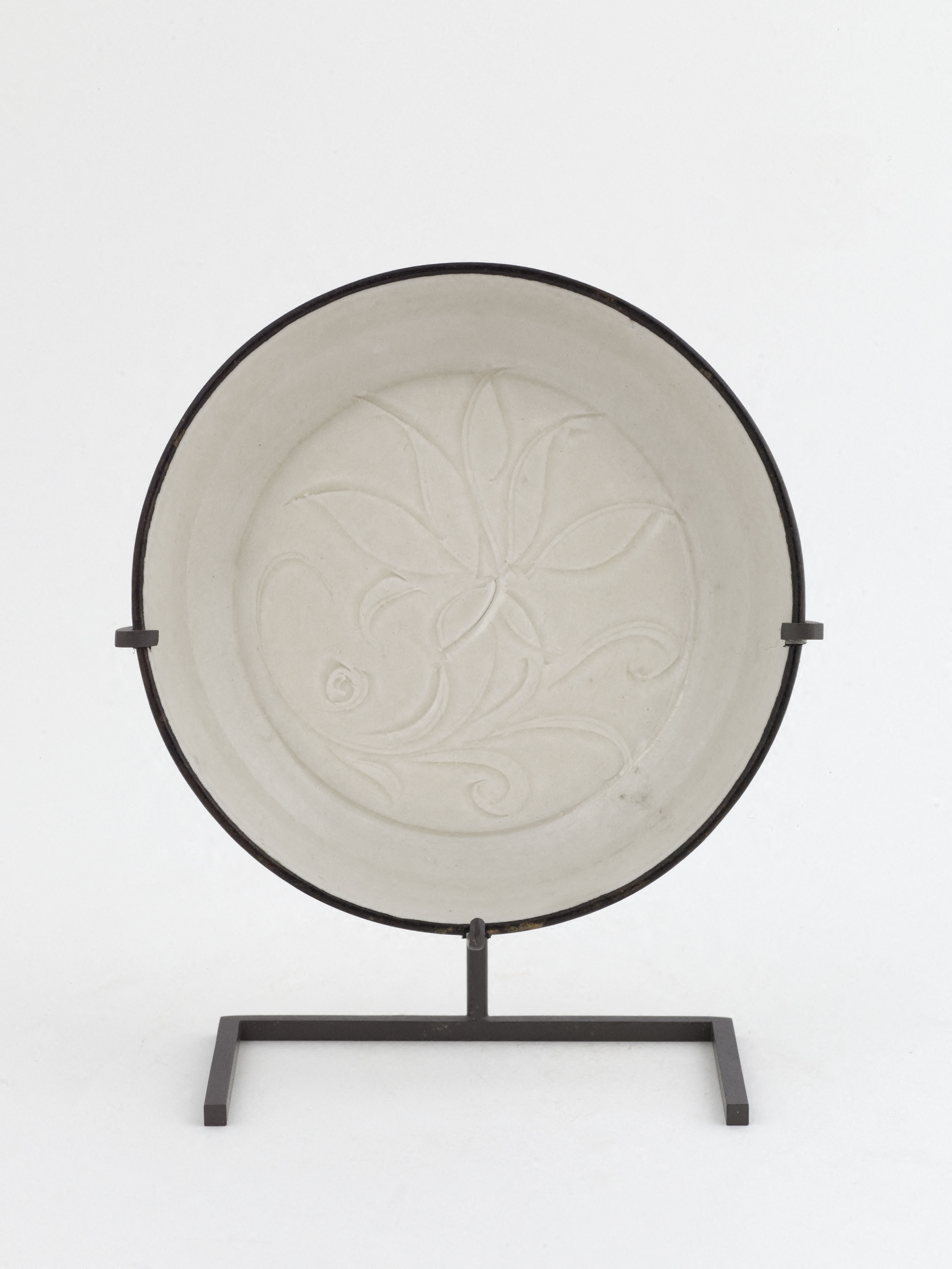
Coupelle
Porcelaine, Glaçure = Couverte, Gravé = incisé
Vaisselle et ustensile de cuisine, Récipient (vaisselle)
Don manuel : Mocquard, Pierre
M.C. 9764
Starting in the reign of Shenzong 神宗 (1068-1085), the Ding kilns developed the upside-down firing technique called fushao 覆焼. Used for bowls and dishes, this consisted in firing them face down on circular stands that were stacked inside a saggar rather than placing them face up in individual gazettes. There were at least two advantages to this: it obviously saved space, increasing production, and it made savings in materials (pieces standing on the lip were thinner), making them less costly. To avoid the lip sticking to the stand, it was left unglazed and so was covered with a metal band of gold and silver or bronze. Contrary to sources from the Southern Song period, this was not necessarily perceived as a disadvantage. First of all, Firstly, the custom of setting a metal band on the vessel’s lip dated back to well before upside-down firing, and its primary function appears to have been to enhance and to amplify the precious nature of the object; also, the rough surface of the lip ensured the band would adhere better.
Incised designs appear on Ding porcelain ware in the Five Dynasties period (907-960). The ivory tint of the glaze, probably due to the use of charcoal to fire the kilns, was characteristic of the Northern Song and the Jin.



